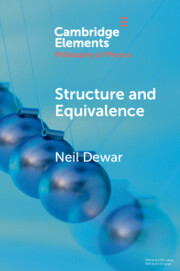Element contents
Structure and Equivalence
Published online by Cambridge University Press: 16 February 2022
Summary
- Type
- Element
- Information
- Online ISBN: 9781108914581Publisher: Cambridge University PressPrint publication: 17 March 2022
References
- 20
- Cited by

